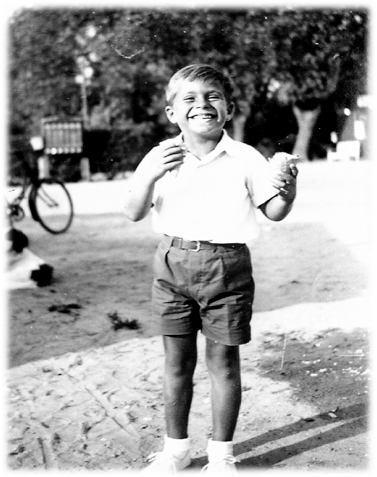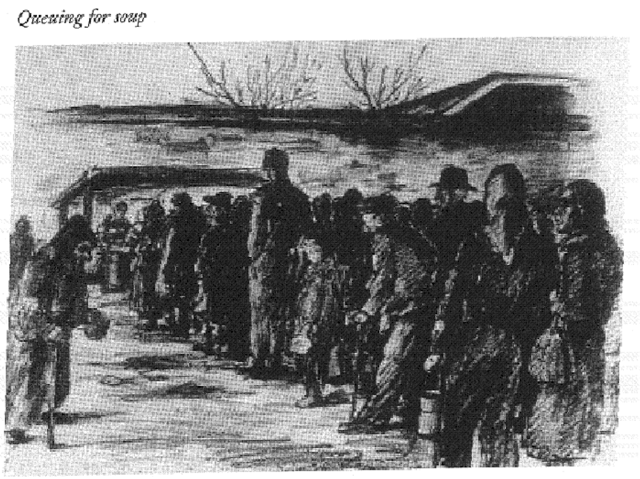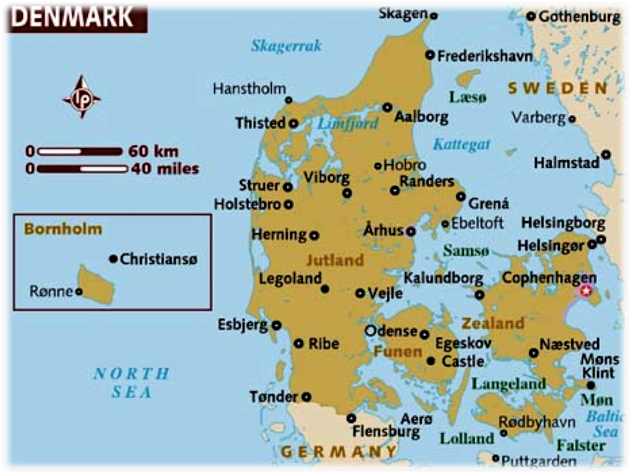by Steen Metz
Heavy pounding on the front door of our apartment in Odense, Denmark! It was early October 2, 1943 – Rosh Hashana, Jewish New Year. I was eight years old. Denmark had been occupied by the the Germans since April 9, 1940. Until then conditions in Denmark had been “relatively normal” certainly compared to other occupied countries such as Poland. Who was at our door this early?

My father opened the door. Two Gestapo officers appeared. Why did they come to our apartment and not next door or below? I did not know that I was Jewish. Both my parents were Jewish but only my father was brought up in the Jewish faith. Is it a crime to be Jewish, a Catholic or Lutheran? Of course not – only in the evil mind of Hitler.
I have many names for Hitler; most of them are not appropriate to use in this article. Let’s just call him the biggest bully the world has ever known. I also call him crazy and insane. We got about one hour to get ready. My mother and I were allowed to visit the bakery on the ground floor; we knew the baker and he gave us a huge bag of bread, rolls and Danish pastry.
We were transported in a truck into the center of Odense where we were assembled in a school yard with a total of sixty Jews. Most of them were young men who had fled Germany and Austria and were not Danish citizens. They were learning agriculture on Danish farms in preparation for a later settlement in Palestine. We reboarded the truck after a while and were driven to Kolding, Jutland – the Western part of Denmark.
We were then herded into cramped cattle cars where we spent the next three days and nights. I was frightened; I am sure that was the case with all the adults as well. The car was completely dark without any windows or lights. We got no food and drinks other than what we had brought from home. The atmosphere was very intense and the smell got worse and worse since we did not have any bathroom facilities – we used buckets in the corner of the car. We made one stop where we got some fresh air and something to drink.
The cattle cars finally stopped on October 5, 1943 after a trip of 550 miles from Denmark. We ended up in Theresienstadt (Terezin in the Czech language) in what was then called Czechoslavakia. The concentration camp was located about forty miles North of Prague and about the same distance south of Dresden, Germany.

It should be pointed out that we were among 472 or 5% of the total Danish Jewish population of 7,500 who ended up in Theresienstadt. Most of us originated from towns outside Copenhagen, the Danish capital. The majority of the Jews in the Copenhagen area had been warned. They managed to go into hiding prior to their escape to Sweden, a neutral country, with tremendous assistance from the Danish people.
The Nazi guards immediately confiscated our money and valuables after having encouraged everyone during the arrest to bring both. An early sign of the evil nature established by Hitler and his people. We were separated into barracks for women, men, children and seniors. Somehow my mother was able to convince the authorities that I, at the age of eight, should stay with her. This arrangement was quite unusual. We spent the next eighteen months in what I describe as “hell” in my book “A Danish Boy in Theresienstadt” – Reflections of a Holocaust Survivor.
Theresienstadt was a concentration camp but not an extermination camp with gas chambers like Auschwitz. The perception is that Holocaust Survivors have a number tattooed on their underarm. However, “only” the survivors from the Auschwitz- Birkenau Complex – the most “infamous” of all camps with a total of almost 11/2 million inmates passing through – had their numbers tattooed.
All adults over sixteen years of age had to perform slave labor. My father was exposed to some heavy road work, including digging ditches. He was an attorney and was not used to this kind of labor. Additionally, witnesses have reported that he was whipped and physically abused. My father apparently ended up as a nervous wreck when he could not keep up with the work load the Nazis expected of him. He could not handle it and lost half of his body weight. He became sick and was transferred to an infirmary where he spent several weeks. They had great doctors – Jewish inmates – but they did not have the medical supplies and tools nor the food to save my father. He passed away at the young age of forty after spending less than six months in camp.The Nazis stated that my father died from pneumonia; they were not going to admit that he died from starvation.
It is amazing that the Nazis were not the only ones denying that my father died from starvation. A well-known Danish Historian, Hans Sode Madsen, wrote the following in a book published in Danish in 2003 “In the Shadow of Hitler’s Germany (I Hitler – Tysklands Skygge) on page 266: “out of the 481 [the correct number is 472] Danish Theresienstadt Jews a total of 53 died, none of them from starvation. Age, illness and physical strain was the reason for their death.” I am sure you can imagine that this is an extremely sensitive point with me. It is in my opinion irresponsible reporting based on all the existing facts, documents and witnesses. An e-mail exchange with the author did not change his opinion. Who knows best? A Historian or a Survivor?
To my knowledge my mother was not physically abused but she was mentally abused on more than one occasion. She was working in a factory with many other women. One day an officer appeared and asked my mother how she was feeling. She answered ”not so well – I just lost my husband.” The officer asked “How did he die?” My mother innocently replied “from starvation and malnutrition.” Apparently her co-workers assembled around her after the officer left. They were horrified that my mother had told the truth. To set an example and to dehumanize the women the officer retuned for the next seven days asking the same question. This time my mother answered “from pneumonia!”
I did not have to perform slave labor since I was only eight. My mother thought, however, it would be a good idea for me to work since time would pass faster. I always have to remind students that communications were quite different in those days since we did not have television, computers and certainly not smart phones. I was a messenger carrying documents and messages from one Nazi office to the other for a couple of hours a day. A minister related at one of my presentations to a Rotary Club that I was still a messenger since I was sharing my experiences with other people!
On my way back to the barrack I passed a kitchen and found some big sacks of raw potatoes in the back. I took two potatoes and placed one in each of my pockets after making absolutely sure that nobody was watching me. My mother and I would eat the raw potatoes. I did it a number of times; while technically it was stealing it was our way of surviving another day. When we returned to Denmark my mother told me that she was concerned that it would become habit-forming and that I would turn into a kleptomaniac! Fortunately that was not the case.

We needed all the help we could get with food. We received very meager portions: substitute coffee for breakfast with brown bread, the so called “potato soup” – it was boiled water with potato peels – some times with bread for lunch. Dinner was basically the same except at times we would get caraway soup and about once a week a special German pasta dish, dumplings. How were we able to survive on those portions? Very difficult – 40,000 Jewish inmates out of 140,000 passed away from hunger and illnesses such as typhus. I may add that hygiene was very difficult due to conditions in camp including lack of soap; we received a substitute powder. It has, however, not been proven that we used soap made from diseased bodies as has been reported. I am very concerned when non-factual information appears in documents and books; it provides additional ammunition for the increasing number of Holocaust deniers.
We started receiving packages with food, vitamins and clothing from Denmark and Sweden after six months; unfortunately a few weeks too late to save my father. All Jewish inmates in Theresienstdat were entitled to receive packages. The Danes received more food than any other nation due to the tremendous support system and interest in the health of the Danish Jews in Theresienstadt. One day my mother opened a packages and could not understand why it was so heavy. The Nazi guards had replaced the food with three bricks! How cruel can you be?
What else did I do in camp? I played with other children. This included playing soccer on a gravel field. We did not have a real soccer ball but used some old clothes tied together by our mothers. Unfortunately some of my Czech soccer friends were among the 90,000 inmates out of 140,000 deported to extermination camps, such as Auschwitz-Birkenau.
According to my mother the worst part was the uncertainty. Would we get enough food to live another day? Would we become seriously ill? Would we be deported to an extermination camp? What was going on in the outside world? Unfortunately the starvation and malnutrition impacted my father when he had only been married to my mother for a little less than ten years.
The 548 days in camp went extremely slowly. We were finally liberated on April 15, 1945 by the “White Buses” from the Red Cross in neutral Sweden. I learned later that the “White Buses” liberated a total of 15,000 inmates from different concentration camps. The surviving Danish Jews received a warm welcome when we entered a convoy of about twenty buses in Theresienstadt. The war was still going on so we had to stop when we encountered heavy bombardment on our way through Germany. We received another warm welcome in Denmark on our way to Sweden where we spent one week in quarantine so we would not bring illnesses into the country.
The Nazi regime finally surrendered in Denmark on May 5, 1945 after five years of occupation. Ever since the Danes have celebrated the day each year with the Danish flag displayed everywhere. This also happened to be my birthday so I would always tell my friends and anybody else who would listen that the whole country was celebrating my birthday!

My mother and I finally returned to our hometown Odense in Denmark a few weeks later after meeting our relatives in Sweden. It was very difficult to resume normal life without my father. On the other hand we were very grateful to the allies, led by General Eisenhower, invading Normandy. It saved Europe. My mother and I had very limited conversations about our time in Theresienstadt. This was quite normal among survivors and liberators.
I managed to return to my old school and class. I graduated from high school some years later and then from a business college in Copenhagen. Later on I joined a Danish food company, Plumrose, hoping I would get an opportunity to go abroad. After a short training period, including sales, I went to England, then Canada where I met and married my British wife, Eileen. My next stop was USA, where I have lived since 1962 spending time with different food companies – maybe subconsciously I wanted to make sure that I would always have food on the table – including Kraft and Sara Lee as well as a couple of local companies.
I retired in 1999 and since then we have been fortunate enough to split our time between Florida and the Chicago area. Initially tennis, exercise and duplicate bridge took up a major portion of my time. Since completing my book “A Danish Boy in Theresienstadt,” sharing my Holocaust experiences has become a major passion of mine. I have talked to over 250 groups reaching almost 30,000 people, mostly students, since October 2011, in Southwest Florida and in the Chicago area. I call it my second career. It has been extremely satisfying since the students have been really attentive and respectful and they, especially middle school students, ask some excellent questions.
It has become more and more important that we never forget that the Holocaust took place in view of the increasing number of deniers all over the world. I established a website two years ago as another reminder of the Holocaust with the very appropriate name: steenmetzneverforget.com. I encourage the readers of this article to review the contents of the website as well as sharing it with other interested parties. I also welcome comments and questions; they will be answered in a timely manner.

I am often asked by students, what can we learn from the Holocaust? I know my mother mentioned a few times that one should never give up, especially when she had a nine-year old boy. She was a very tenacious person and was amazed that she lived until the age of ninety. I believe I have inherited some of her tenacity and hopefully also her good genes so I can continue my second career for quite a while.
Finally I would like to thank Kelly Ramot, the Executive Director of Thanks to Scandinavia for giving me an opportunity to share my Holocaust experiences with the readers and members of the association. I would also be remiss if I did not thank my countryman, Victor Borge – and Richard Netter – for having the vision to found the organization. Just thinking about Victor Borge makes me smile!
For more information about Steen Metz, please visit steenmetzneverforget.com.